
Issue 081
November 2011
Build the ‘art of eight limbs’ into your fight-night flurries with FO’s guide to elbow and knee set-ups and combinations
Connections from kicks and punches are not quite the same as knees and elbows. Occasionally overlooked they are a vital part of any mixed martial artist’s repertoire due to their versatility and damage potential. When drilling elbows and knees it takes a skilled pad holder to show the angles and receive the impact properly. A thick, good quality bellypad to aid Thai pads in absorbing knees is a worthwhile investment for the professional pad man.
Pete Irving
Professional fighter
Pete Irving is a professional welterweight fighter and Fighters Only’s resident fight expert.
COMBINATION FINISHING ON A KNEE
Adding a knee to the end of a kick/punch combo is a good way to establish dominance upon entry to the clinch, or as a tool to break the clinch before it can be initiated.
JAB, TEEP, LEFT HOOK, RIGHT KNEE
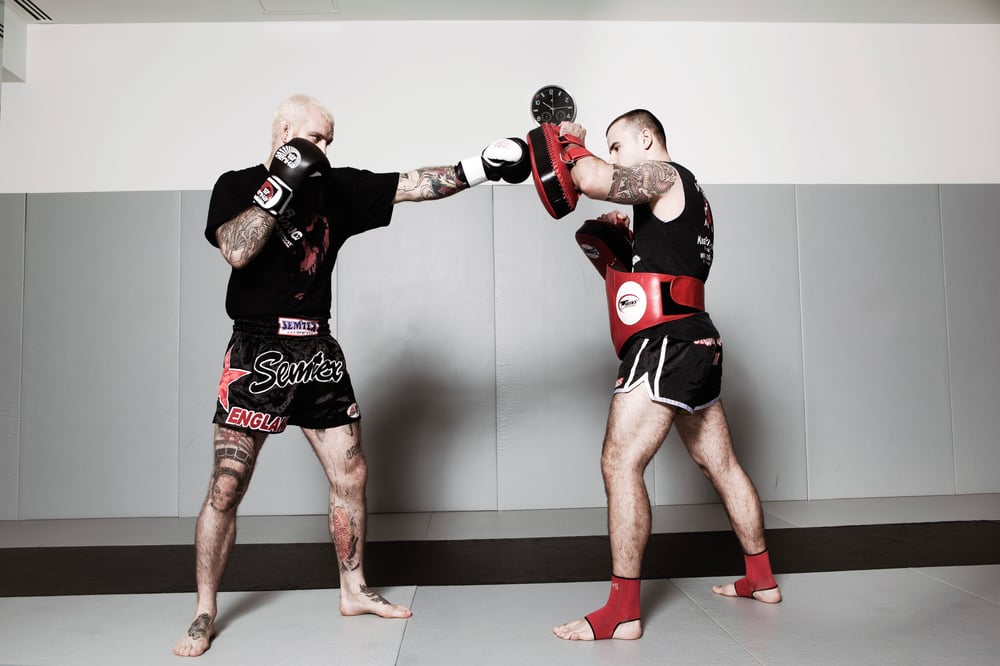
1 Pete throws the jab long, with a stiff straight arm, hiding his jaw behind his shoulder. This jab is intended to sense the distance, and hold the opponent at long range, cuing them up for the next shot.

2 Pete throws the teep to the belly pad. Lift the knee first, then extend the lower leg, ‘screwing’ the hip forward to extend the range. Push the toes down at the end of the kick, like pressing a gas pedal on a car. Note Pete’s cover: the same-side arm whips back, pushing the kick forward and the opposite hand stays tight, covering the chin.

3 Mariusz shows the left hook as he bounces back after the teep. Pete catches the pad with the left hook as Mariusz moves in. For full power, Pete twists the lead leg, whipping the punch from the hip.
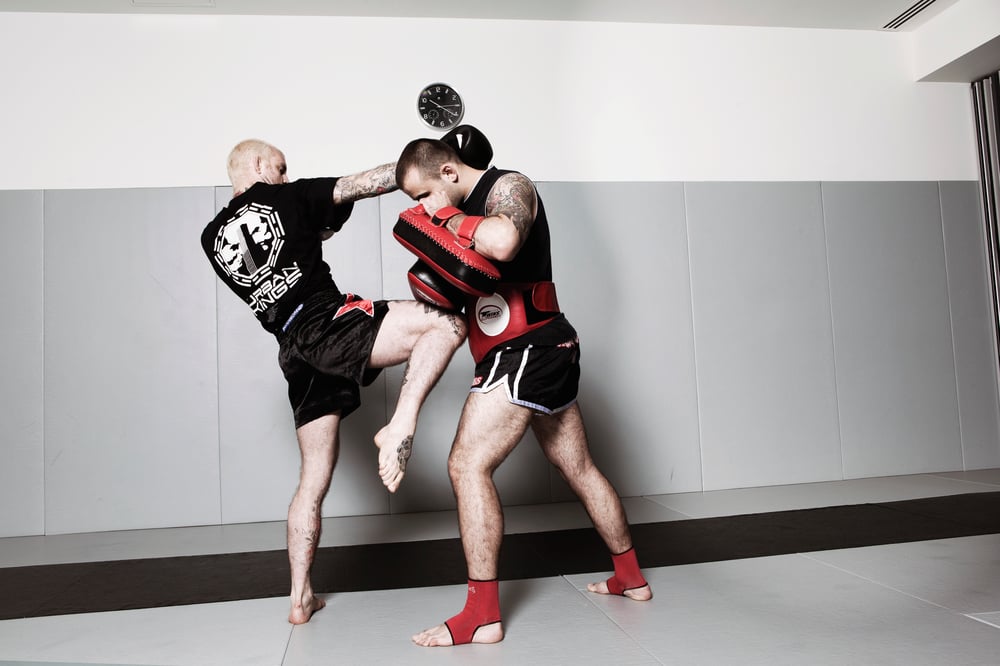
4 Pete grabs Mariusz’s neck and knees the belly pad. He extends the right hand, like a right cross, but deliberately overshoots, reaching around the far side of the neck. Pete points the toes back for the straight knee, making the leg like an arrow point. The pad man presses down the pads and leans in slightly to absorb the impact. Mariusz shows the right pad for the left knee, and braces the pad by pushing the other pad on top.
BLOCKING AND COUNTERING WITH THE KNEE

1 Pete throws the jab, keeping his right hand tight on the temple.

2 Pete twists through the cross, bringing the left back to the temple.
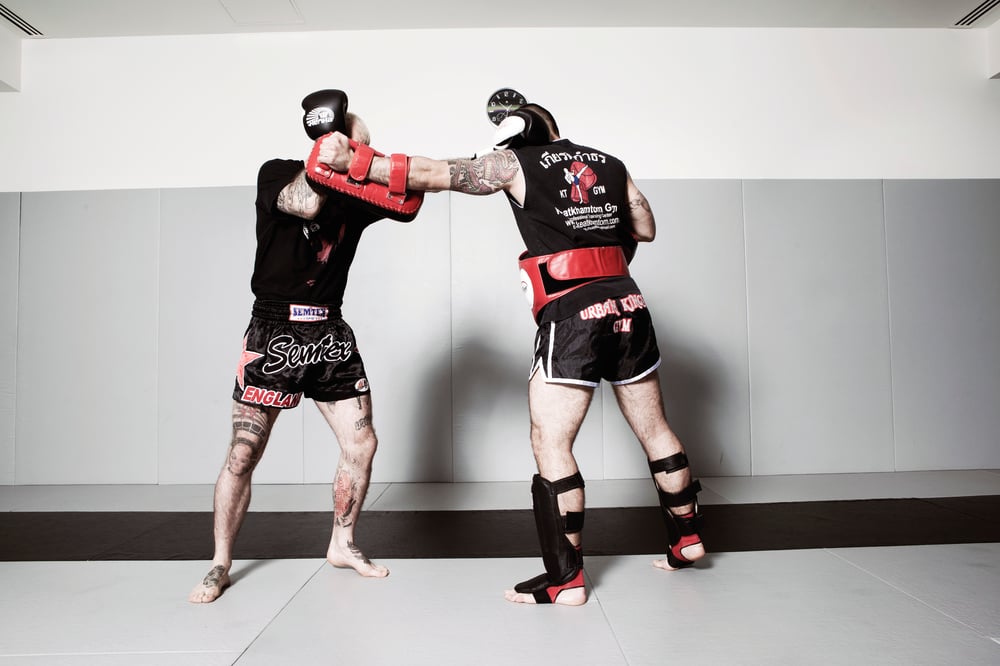
3 Mariusz tests Pete’s block by hitting him with the pad, at the same angle as a left hook. Pete has retracted his arm and catches the pad on the forearm. He reaches for Mariusz’s collar on the opposite side.
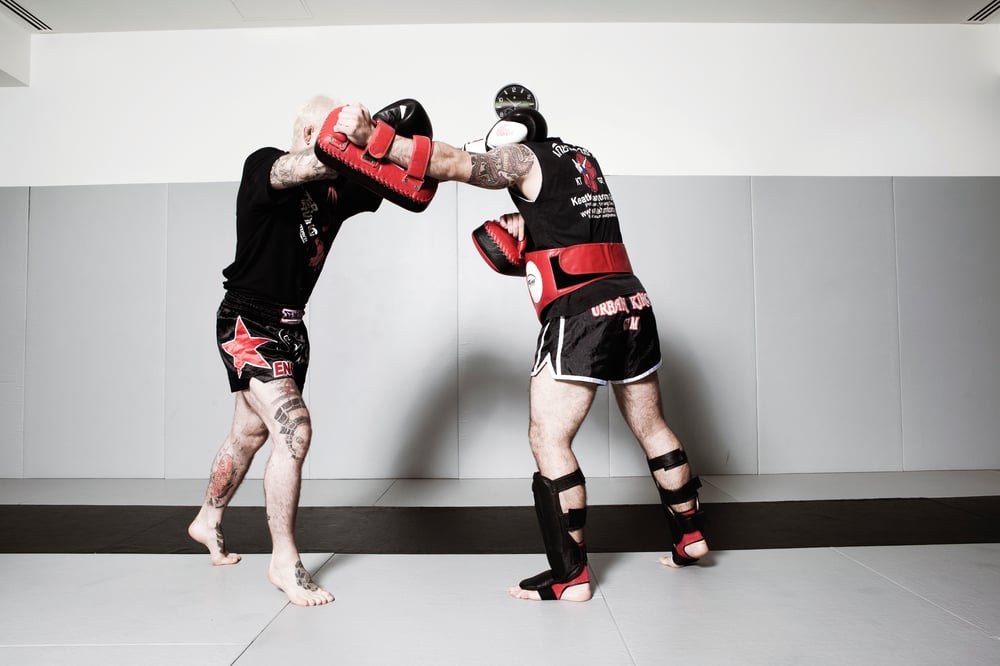
4 Pete switches stance as he grabs the collar and bicep.
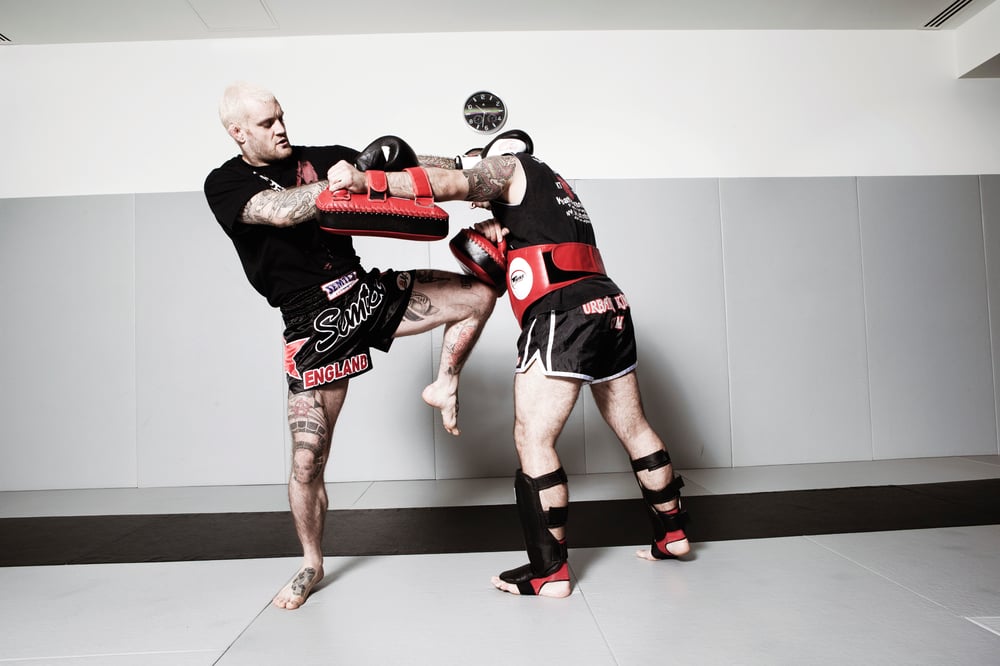
5 Pete knees with the left knee.

6 Pete steps back in his stance, and draws back the elbow over Mariusz’s arm.

7 Pete throws the slashing elbow over the top.
ELBOWS ON THE THAI PADS
Elbows can be used in order to produce two distinct results. The elbow can strike heavily and concussively to break a jaw or cause a knockout, or slice lightly and sharply, grazing the skin in order to produce a cut which may cause the referee to halt the contest. Bear these in mind when working the pads; practice the type of connection that will produce the intended result.
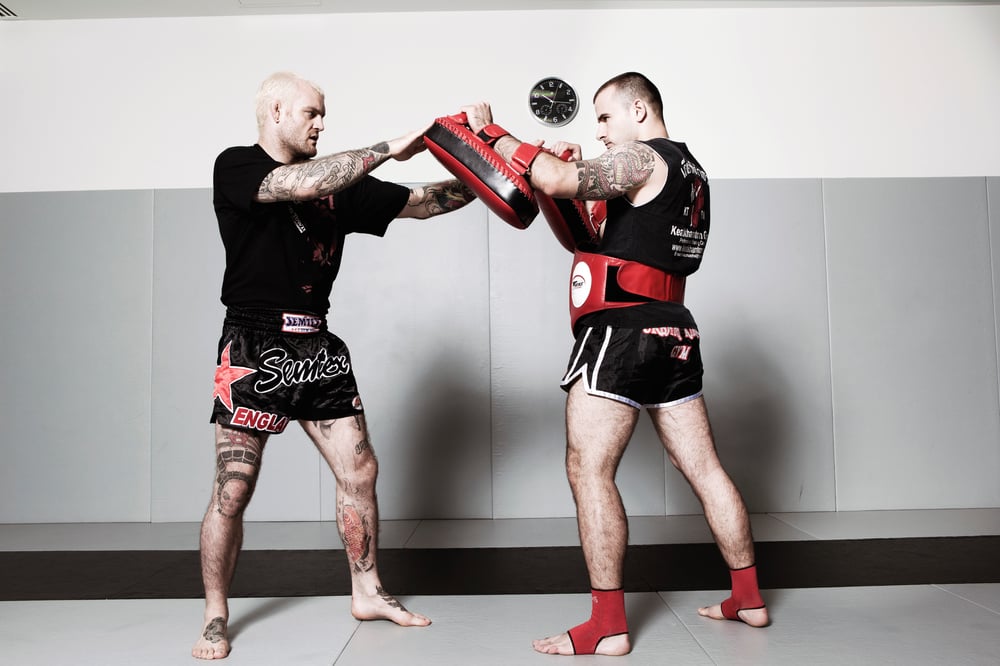
1 Mariusz holds the pads out long, lead hand slightly in front. Pete reaches out and places his fingers over the top of the pads.

2 Pete steps in an up elbow from his lead hand. Unlike a punch, the lead elbow goes to the same side pad.
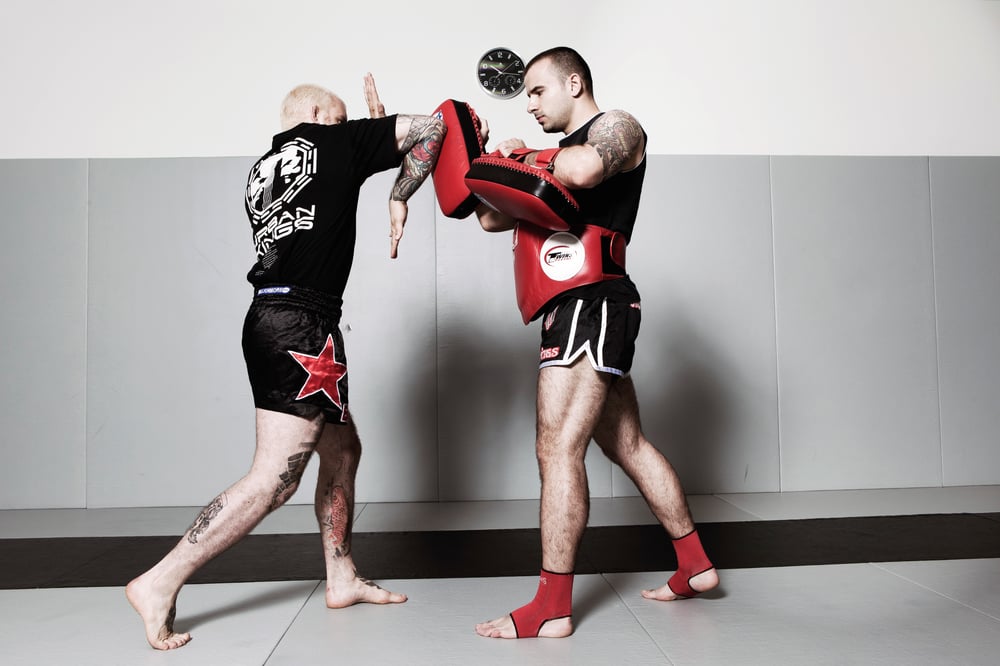
3 Pete pulls down the leading pad and strikes right over the top, slicing down to the rear pad.
ELBOW AND KNEE COMBINATION
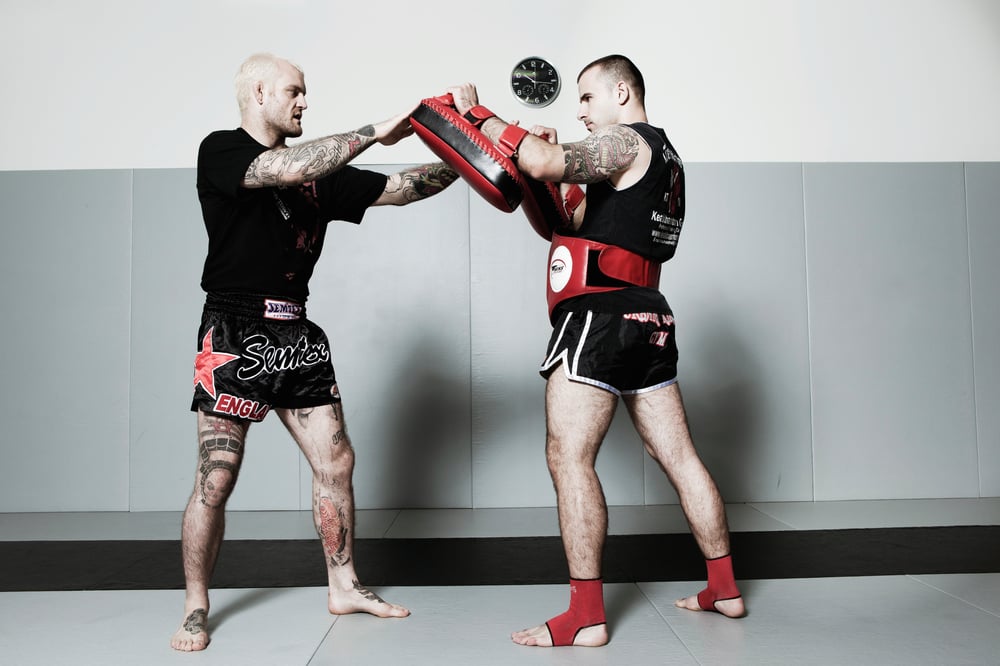
1 Pete uses long guard and touches the top of Mariusz’s pad.

2 Pete pulls down the lead pad, and strikes the back pad over the top with an elbow slash.
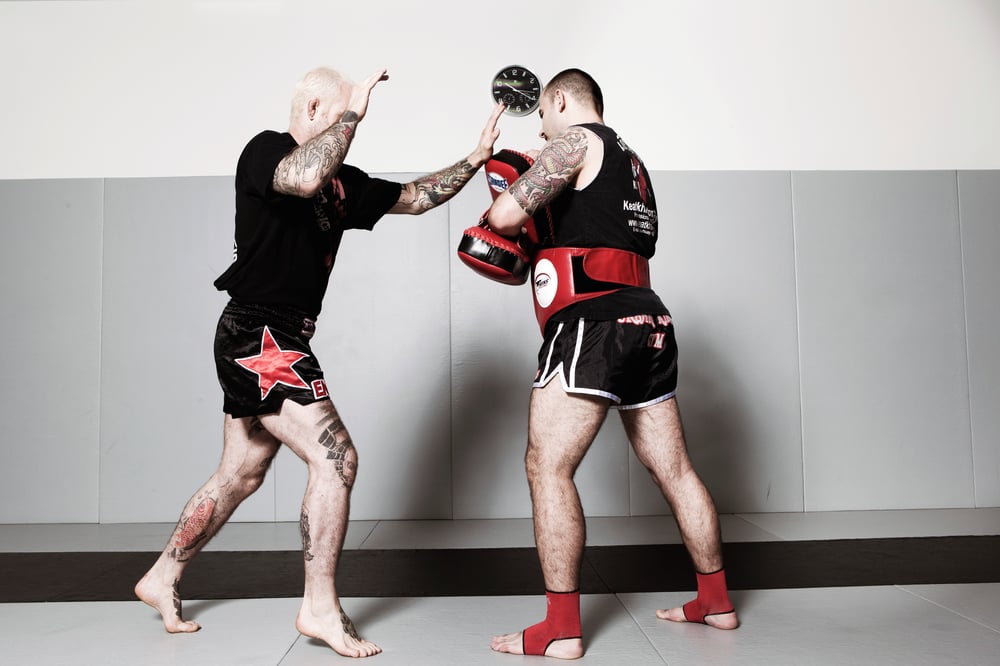
3 Pete switches stance.
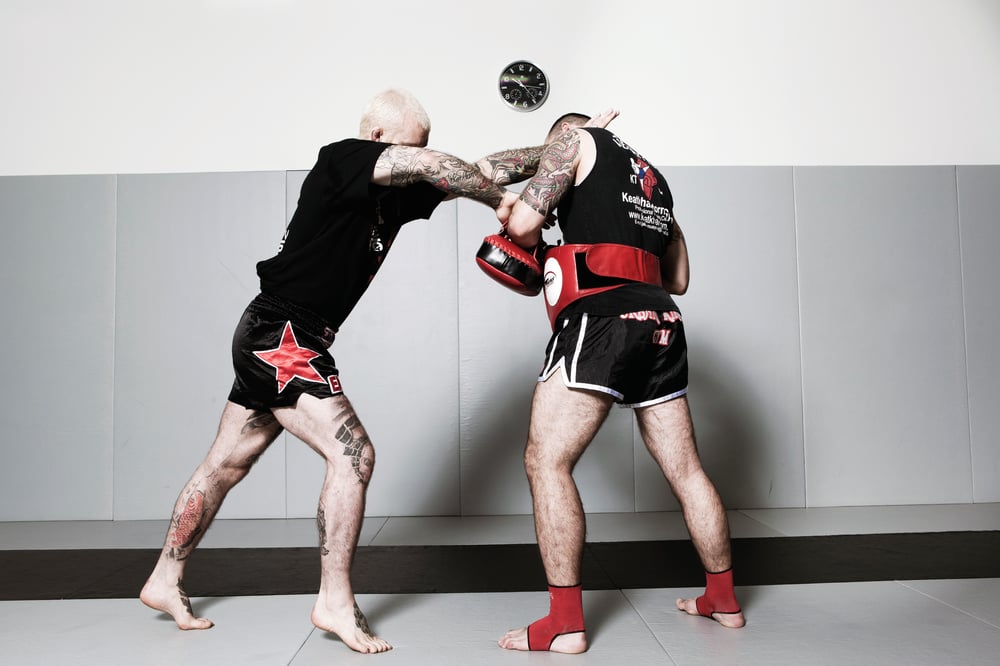
4 Pete grabs across Mariusz’s neck and sets his back leg to knee.
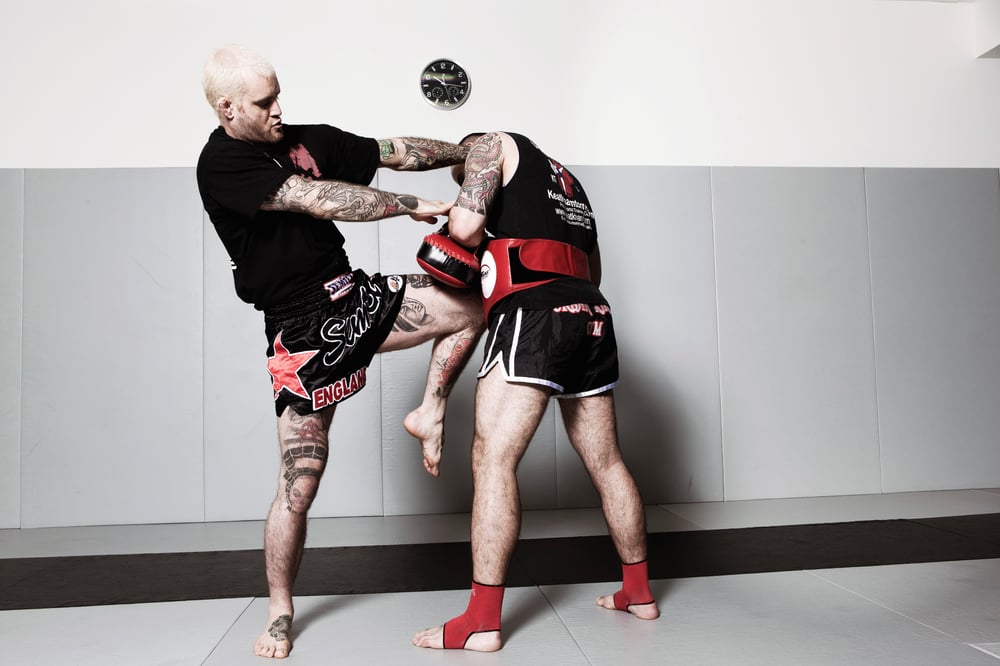
5 Pete knees with the left, pulling Mariusz into the strike.

6 Reverse view.
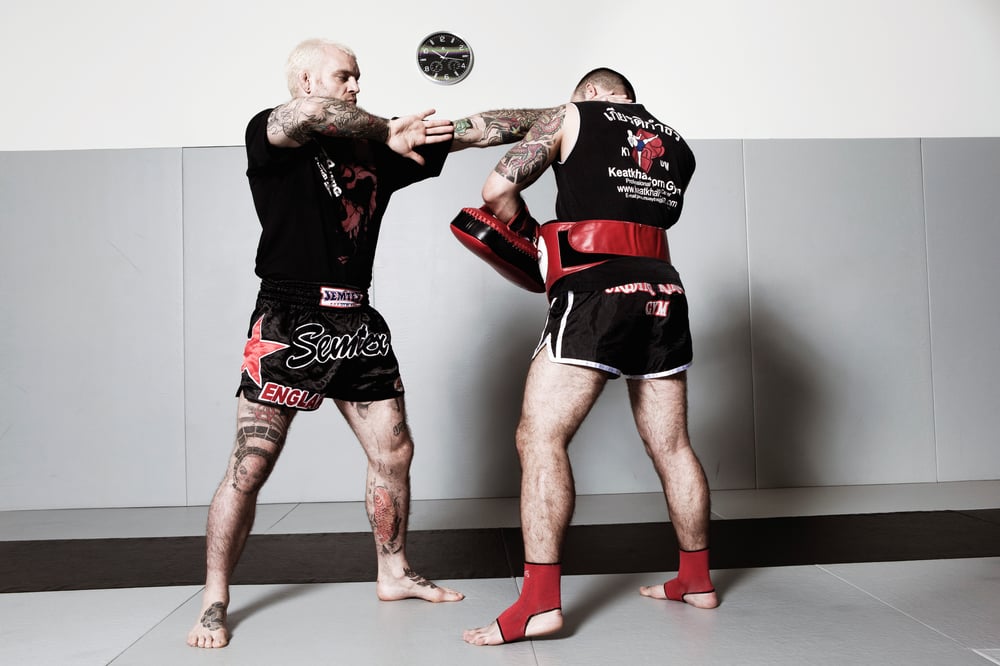
7 Pete lands back in orthodox, with his elbow cocked, and looks for which angle of elbow Mariusz shows.

8 Pete sees the pad held for the straight, and throws the right elbow over the top.
ELBOW ANGLES AND COVER

1 UP ELBOW (SOK NGAD):
Stepping in, whip the elbow up under the chin like an uppercut. The attacking arm makes a triangular frame against the head, covering against the counter attack. The right hand is ready to block and strike.

2 HORIZONTAL ELBOW (SOK TAD):
Thrown like a hook, or even as a follow up to a missed hook.

3 ELBOW SLASH (SOK TI):
Aimed at the forehead, eyebrows, eye-socket or nose, the goal is to catch the skin and tear it, causing blood to flow into the eyes, thus obstructing your opponent’s sight. The elbow comes over the top vertically, or at 45 degrees. The palm is rotated outward, to face the opponent, exposing the sharpest part of the elbow. The other hand covers the forehead to catch counter elbows without covering the eyes.
...









